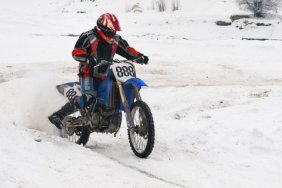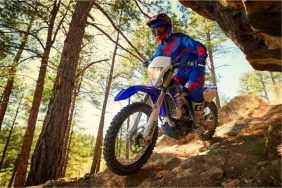 As fun and exciting as it is to hit the trails, it’s important to keep in mind that, just because you’re ready for the woods, it doesn’t necessarily mean that your equipment is. This is of vital importance, for any piece of outdoor gear, but when that piece of gear is a mountain bike, safety and transportation become key, so it’s important to be thorough. In Part One, we dove a bit into some quick spot-checks you can do to see if your bike is trail-ready, and today we’ll finish the series with a further handful of tips to prepare your two-wheeled transportation for your next trip.
As fun and exciting as it is to hit the trails, it’s important to keep in mind that, just because you’re ready for the woods, it doesn’t necessarily mean that your equipment is. This is of vital importance, for any piece of outdoor gear, but when that piece of gear is a mountain bike, safety and transportation become key, so it’s important to be thorough. In Part One, we dove a bit into some quick spot-checks you can do to see if your bike is trail-ready, and today we’ll finish the series with a further handful of tips to prepare your two-wheeled transportation for your next trip.
Your brakes will be crucial to your safety, as well as the bike’s performance, on the trail, so be sure to test them before heading for a trail ride. To do this, start your test ride at a moderate speed and gradually apply brake pressure. Obviously, the desired outcome is that your brakes stop your bike, but the stop should be smooth, without excessive vibration or squeaking. Also, check to see if your brake lever touches the handlebar or comes close. If so, you may need to make adjustments. For minor adjustments, tighten the brake cables by twisting the barrel adjusters on your levers. If that doesn’t do the trick, you probably need to replace your pads. If you have rim brakes, check to make sure they make even contact with the rim, with no part of the pad hanging below the rim. For hydraulic disc brakes, there are no barrel adjusters, but you can adjust the brake lever on some bike models, or adjust the calipers near the disc.
While you’re down there, checking your brakes, take a look at your tires, too. Look for signs of worn tread or cracked sidewalls. If you have tubes with sealant that has been in your tires for a few years, the sealant may no longer work. (It’s smart to carry a spare tube with you in case you get a flat.) You might also consider converting to tubeless tires if you don’t want to worry about tubes. There are kits available, and also homemade kits you can put together yourself that include replacement valve stems, tape for the rim, and tire sealant. Tubeless tires and sealant can be as effective in preventing flats as tubed tires with sealant, and going tubeless also gives you the option of running lower tire pressure for better traction without risking pinch flats.
Lastly, spin your wheels with the tire off the ground and watch the rim closely to check for wobble. Grab each spoke and give it a wiggle, too. The tension should be the same on each one. If you feel loose spokes, snug them up with a spoke wrench, which is a cheap, but important addition to your tools, but be careful not to over-tighten the spokes or you can make your wheel wobble worse. If you find several loose spokes, I suggest heading to the nearest bike shop to get it looked at.
There are several more parts to your mountain bike that you’d do well to get checked out before a serious season on the trail, but the tips outlined in this series are the fundamental points that any average rider can not only look at, but potentially fix on their own. Anything else, such as the fork or suspension, might need to be handled at a shop, unless you’re a mechanic. Hopefully these tips will help you prepare your bike for the trail! Safe riding to you all!








